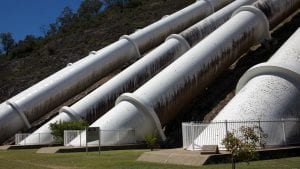New climate research has warned that the individual energy needs of a growing population could push global warming to dangerous levels within just four years, highlighting the need to fast-track the global shift to cleaner sources of energy like renewables.

The model, developed by researchers from the University of Queensland and Griffith University, predicts the global average temperature could rise by 1.5°C as early as 2020, based on forecasts of population and economic growth combined with rising per capita energy consumption.
The study is the first to include ‘energy use per person’ as a predictive factor rather than focusing on economies or populations.
“Nations at the 2015 UN Conference on Climate Change agreed to keep the rise in global average temperature below 2 degrees Celsius, preferably limiting it to 1.5 degrees to protect island states,” said Professor Ben Hankamer, from UQ’s Institute for Molecular Bioscience (IMB).
“Our model shows we may have less time left than expected to prevent world temperature from rising above these thresholds.
“World population is forecast to increase to over 9 billion people by 2050, which, together with international ‘pro-growth’ strategies, will lead to continually increasing energy demand.
Professor Hankamer said it was vital to move from CO2-emitting fossil fuels and tap into renewable resources to accommodate these increases while controlling temperature.
“The sun is by far the largest renewable energy source,” he said. “In just two hours it delivers enough solar energy to the Earth’s surface to power the entire global economy for a year – and now is the time to make the switch.
“A cost-neutral strategy that governments should consider to fast track this transition is diverting the $500 billion used to subsidise the fossil fuel industry internationally to assist the global renewable sector.”
Griffith University’s Dr Liam Wagner said the model challenged the assumption that increases in energy efficiency and conversion would offset increases in demand.
“We have successfully applied our model to world energy demand from 1950-2010 and demonstrated that increases in energy efficiency alone don’t offset the surge in in energy use per person,” he said.
“Simply put, as we get more efficient at manufacturing, goods get cheaper and we buy more.
Dr Wagner said massive increases in energy consumption would be necessary to alleviate poverty for the nearly 50 per cent of the world’s population who live on less than $2.50 a day.
“We have a choice: leave people in poverty and speed towards dangerous global warming through the increased use of fossil fuels, or transition rapidly to renewables.
“As 80 per cent of world energy is used as fuels and only 20 per cent as electricity, renewable fuels in particular will be critical.”
Dr Ian Ross from IMB and Professor John Foster from UQ’s School of Economics were integral in developing the model. The work is published in the journal PLOS ONE.
The team received support from the Australian Research Council, the Queensland Government and The University of Queensland.








